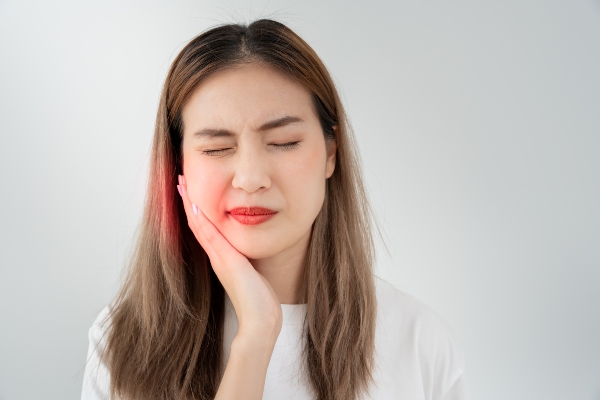How Dentists Use Botox

Dental Botox® surprisingly pretty versatile when it comes to what it can be used for. It plays the role of an elective procedure that removes age lines and other superficial imperfections. Additionally, general dentists and oral surgeons incorporate dental Botox® into their treatment plans.
Read on to learn more about how dental Botox® can be used for cosmetic and therapeutic purposes.
The science behind dental Botox®
The active ingredient of Botox® is a dangerous yet useful toxin. Under the wrong circumstances (like botulism), the Botulinum toxin can cause paralysis throughout the body. However, the fact that Botox® causes paralysis is what makes it useful.
Being a neurotoxin, Botox® inhibits the action of motor neurons. Motor nerve endings transmit electrical impulses that cause muscle contraction. When Botox® blocks such nerves, it renders the muscles immobile.
Botox® also removes the nerves’ ability to transmit pain signals. Below are a few ways that dental Botox® can be used.
1. Correction a gummy smile
Some people have a smile where their lip retracts past the teeth and the gums. Their smile exposes the gums, making for an unattractive look. A cosmetic dentist will use dental Botox® to limit the retraction of the lip muscles.
2. Reduction of smile lines
With age, many people develop lines at the corner of their lips or either side of the mouth. These lines become more prominent when a person laughs or makes certain movements with their mouth.
Dental Botox® causes the muscles around the lips to relax and stretch out, which in turn stretches the skin that covers them. This effectively reduces the appearance of wrinkles.
3. Management of facial pain
Most disorders of the jaw cause pain around the jaw, ears and facial muscles. Sometimes, the conditions cause chronic headaches. A dentist can use therapeutic dental Botox® to cut off the transmission of pain signals to the brain.
Usually, a dentist will use Botox® to manage the pain as they diagnose and treat the underlying cause.
4. To stop jaw clenching, teeth grinding and other jaw disorders
To grind their teeth, a patient needs to clench their jaw, exerting pressure on the teeth and the jawbone. The person cannot clench their jaw if the motor nerves that control the jaw muscles fail to fire electrical impulses. A dentist may use dental Botox® to deactivate these nerves.
Botox® offers relief from Bruxism and jaw clenching, giving the dentist a chance to address the underlying causes like:
- Stress
- A bad bite
- TMJ
- An otherwise malformed jaw
In this scenario, dental Botox® can act as a standalone treatment that manages the condition. It can also be used as part of a treatment plan that may involve corrective procedures that target the structures around the jaw.
5. Improving the healing process after oral surgery
Being a paralytic, dental Botox® can act as a pharmaceutical splint. A dentist may use Botox® to deactivate the jaw muscles and prevent a patient from clenching their jaw after oral surgery.
A patient who goes home with a loaded dental implant could benefit from dental Botox®. By deactivating the jaw muscles at the site of the implant, dental Botox® will keep the jaw muscles from clenching and putting pressure on the implant and the surrounding bone.
The same goes for any procedure where the jawbone needs time to heal without undue pressure put on it.
Learn more about dental Botox®
Reach out today to get started with dental Botox! Our team is readily available to assist you.
Request an appointment here: https://www.mytotaldentistry.com or call McCarthy Dentistry at (740) 546-5178 for an appointment in our Marietta office.
Check out what others are saying about our services on Yelp: Read our Yelp reviews.
Recent Posts
There are two types of tooth extractions: simple and surgical. Simple extractions are for teeth that are entirely exposed and can be accessed above the gumline. Surgical extractions require an incision into the gumline or connective tissue. The type a patient needs depends on the cause and state of the tooth. Here are six reasons…
A tooth extraction can improve your dental health. The dentist can assess the tooth and see if it is still repairable. If not, then the dentist will remove it. Knowing more about tooth removal can help you prepare for the procedure. Here are some tooth extraction questions you can ask your general dentist on consultation…
Tooth extraction is a common dental procedure where a dentist removes a tooth from its socket in the jawbone. While it may seem intimidating, these procedures are often necessary to maintain oral health and prevent further complications. Here are the two types of tooth extractions that dentists use to improve your smile and overall health.Simple…
A dental bridge is a tried-and-true way to replace missing teeth, restore chewing function, and protect remaining teeth from shifting. Modern materials, precise digital planning, and evidence-based protocols allow a bridge to blend seamlessly with surrounding teeth and support the health of the smile. With the right bridge design and care routine, patients can experience…


